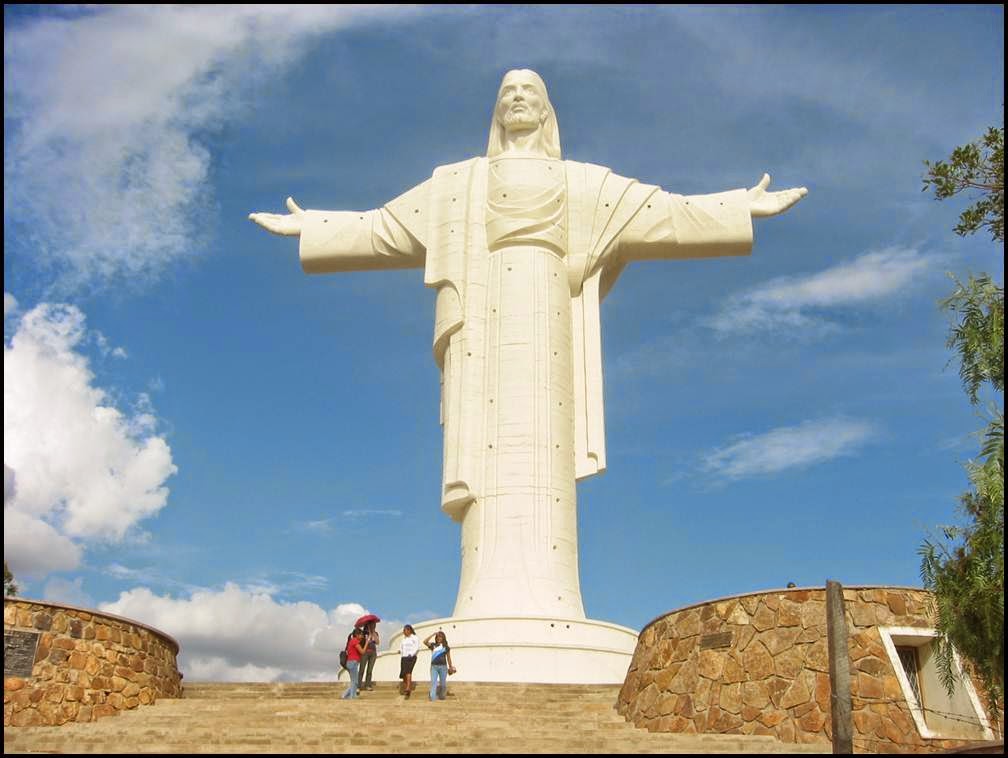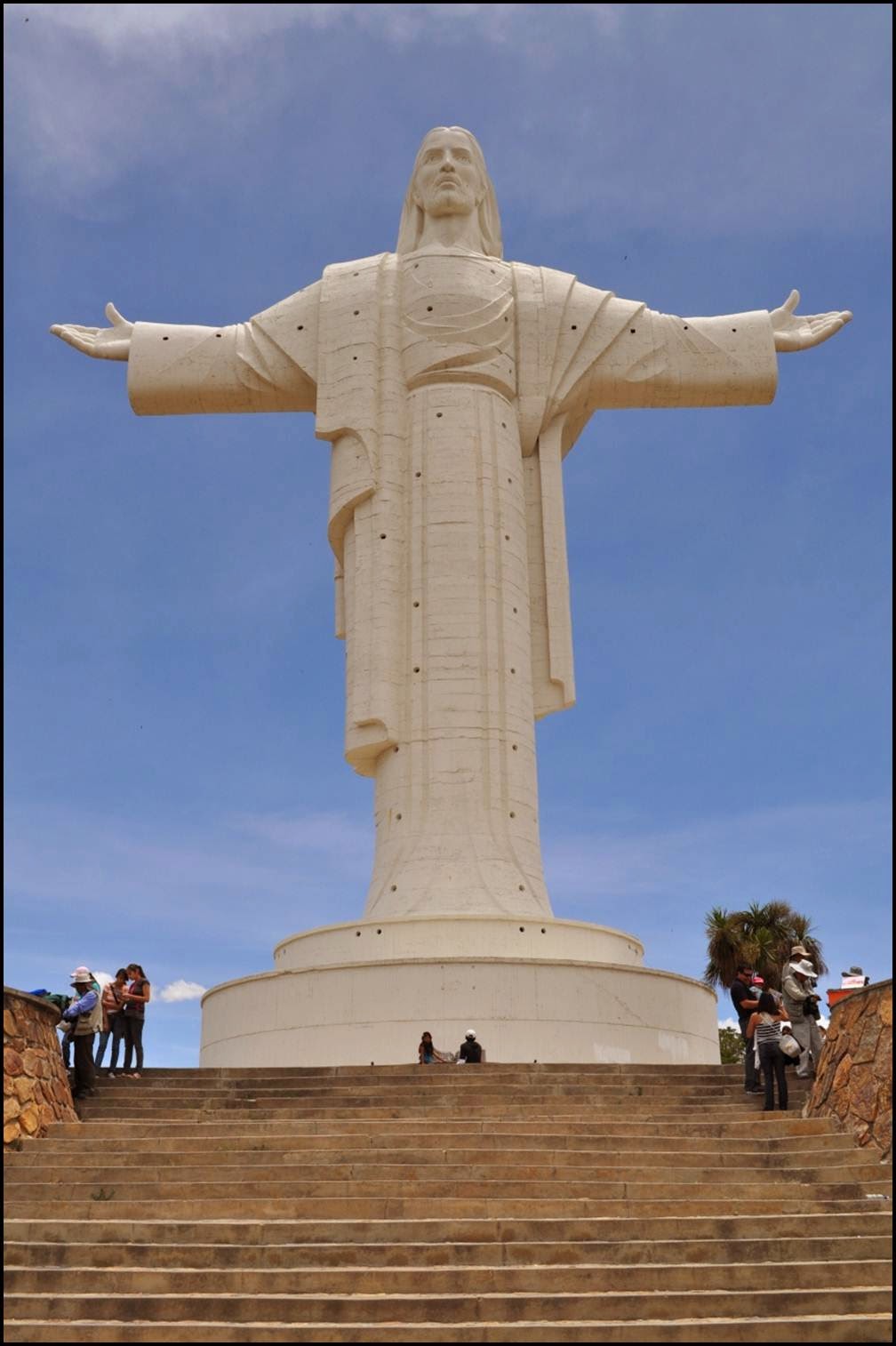The Christ of Tears, Cochabamba, Bolivia:
A mysterious sculpture of Christ enshrines in Cochabamba, Bolivia at the Chapel of Christ of the Tears of the St. Peter (the Capilla Cristo de las Lagrimas de San Pedro). Every Good Friday of human blood it has wept tears.

In an Australian lab have been tested the tears and human blood to contain found, for fraudulent mechanisms has been examined that the statue and to be a hollow was found that clams the devotees. On film has been caught the weeping it all off to the top.

Inside, in blood before it was covered looked like of what the sculpture the pictures displays the chapel.

The Cristo de la Concordia, Cochabamba, Bolivia:
In the world the largest statue of the Christ is located in Cochabamba which is the Cristo de la Concordia (the Christ of Peace) statue by cement and steel was built. A few centimeters by just in Brazil the more famous counterpart of this sculpture it surpasses. On July 12, 1987 was began the construction work for this colossal statue and on November 20, 1994 was completed.

Both this statue in Bolivia and in Rio de Janeiro the Cristo Redentor (the Christ the Redeemer) are 108 feet (33 meters) tall, because when Christ was 33 years old he was died. Appropriate is the extra height says the Cochabambinos, since 33 years and a little bit more actually lived the Christ.

Though in the area it located on the highest peaks of the valley of Tunari and Cochabamba there are magnificent views of the statue from the base. More magnificent views for even itself of the statue to the top the visitors can climb on Sunday. In Rio on the more popular Cristo Redentor statue was modeled the Cristo de la Concordia, but more loving appearance has this one believe the local people. More human features does have the version of Copacabana and in a welcoming embrace are outstretched its arms.

The Horca del Inca, Copacabana, Bolivia:
By the pre-Inca Chiripa people for astronomical purpose was used a trilithic interesting structure is the Horca del Inca which located in Copacabana in Bolivia.

As the astronomical observatory in the 14th century BC by the pre-Inca Chiripa culture was built the despite the name of it. Here also held the rituals at June 21 on the solstice of winter. When came along the Spanish, hidden here of finding gold in the hopes some of the site they destroyed. To a gallows its resemblance noting and with the Incas associating it mistakenly, it present name the monument they gave.

A gallows resembles the structure of trilithic which means three-rock, the popular name of it’s hence. Naturally upright rocks of two between, in precise positions seven rock slabs of horizontal placed the builders of the Chiripa of the heavenly bodies the observation that would enable, off the rocks as it reflects can be viewed the sun on the equinoxes.

Today in position left the cross-piece there is only one, to the Spanish thanks, and with graffiti have been decorated the rocks unfortunately. However, plenty of ambience has the ancient site still as well as of Lake Titicaca the fine views and also the fine views of the town of Copacabana.
8:53 PM
Tags :
Travel Destinations
Subscribe by Email
Follow Updates Articles from This Blog via Email

No Comments